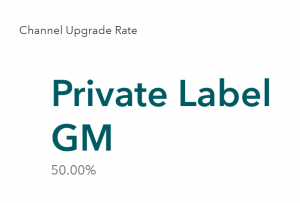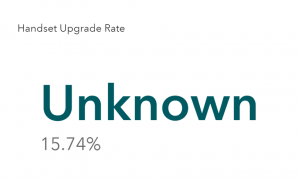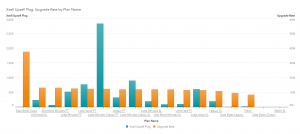You're the operations director for a major telco's contact center. Your customer-care workers enjoy solving problems. Turning irate callers  into fans makes their day.
into fans makes their day.
They also hate flying blind. They've been begging you for deeper insight into customer data to better serve their callers. They want to know which customers will likely accept offers and upgrades they're authorized to give. Their success = customer satisfaction = your company's success, right?
Automated analytics facilitate that level of insight, and this post introduces you to it. It will help you begin to think through what it looks like to equip your contact center workers to be heroes. Two subsequent posts will further demonstrate how SAS Visual Analytics leverages automated analytics.
What is automated analytics?
If you're already familiar with business intelligence tools, it's not a stretch to call automated analytics disruptive, significantly changing the way you see BI. In essence, automated analytics uses machine learning to find meaningful relationships between variables. It provides valuable insights in easy-to-understand text generated using natural language.
Automated analytics, which is expanding to include Artificial Intelligence, overcomes barriers to insight-driven business decisions by reducing:
- Time to insights.
- Bias in the analysis.
- The need for more employee training.
An analyst-intensive approach to better insights
Now put your analyst hat on and imagine a day in the life of interpreting data visualizations. Pictured below is a report created to explore and visualize customers' interactions with a telecommunications company. It contains usage information from a subset of customers who have contacted customer care centers. Enhanced by adding cleansed demographics data, this report is being used to target customers for cross-sell or up-sell opportunities.
What’s interesting here is that data plan is not correlated to our variable of interest, Xsell and Upsell flag. This tells me that if we had started a campaign targeted on Unlimited SL customers, we probably wouldn’t have much success.
We might want to target customers based on total days over plan or delinquent indicator or days suspended in the last 6 months, but they were only weakly correlated.
While this correlation provided great insight and may have prevented us from going down the wrong path, I had to physically choose the variables I wanted to include. I used my own logic and chose variables I thought might influence our variable of interest, Xsell and Upsell Flag.
Risk of mistakes, missed opportunity
But there are many other variables in this dataset. What if one of the other variables that I hadn’t thought of was correlated? I would miss some key findings. Or what if multiple variables in combination better predict our variable of interest, Xsell and Upsell Flag?
To dive deeper we could add a decision tree, or other charts to try to determine where we should focus our future efforts. This would take some time to build and we’d need to interpret the results on our own. However, if we use automated analysis the application would:
- Choose the most relevant categories and measures.
- Perform the most appropriate analytics for our data.
- Provide us with results that are easy-to-understand.
Read Part 2 and Part 3
In subsequent posts, you'll see what happens when we turn loose the power of automated analytics with the SAS Viya Platform and let SAS Visual Analytics analyze all the measures and categories. Read Part 2 to find out what it entails to apply automated analysis on the data described above. Read Part 3 to see how automated analysis leads to actionable steps.
What's your experience with automated analytics? Share in the comments.




2 Comments
Hi Melanie,
Might you be so kind and share with me a link of the documentation for SAS Viya automation?
I am wondering what type of default analytics methods you use for modeling?
Is it decision trees or something else?
Thank you!
Automated Analysis is explained well in this paper that was written by Rick Styll. Check out the "How Does Automated Analysis Work?" section. Let me know if you have further questions.